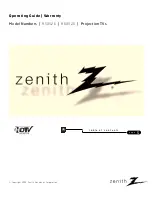
w w w . r m s p l . c o m . a u
rms
4
Applications
1S20
Switchgear ARC Flash Protection
Risk of arc fault damage exists at the CB cable termination and in
the CB chamber itself. The CB cable termination is particularly at
risk to ingress of moisture and rodent damage.
One, two or three arc sensors may be connected to the 1S20 Arc
Fault Monitors as depicted in the single line application diagrams
at right.
Figures 4 and 5 show the trip signals being used to trip the feeder
circuit breaker in the event of an arc fault occurring at any sensor
provided the overcurrent relay starter contact is picked up. In
these applications the overcurrent check stage is optional as the
consequence of a single feeder outage is less than the loss of an
entire BUS.
Figure 7 shows an application where a single 1S20 is applied for
the protection of the Cable box, CT chamber and CB chamber
using three sensors. In this configuration one arc trip output is
used to trip the feeder circuit breaker in the event of an arc fault
in the cable box / CT chamber. The second trip output is set for
independent operation to trip the BUS breaker (BUS overcurrent
check not shown), in the event of an arc fault in the CB chamber.
Existing Switchgear Applications
The existing overcurrent relay protecting the feeder will normally
provide an independent output contact associated with the start
current setting of the relay. That is an output contact that will
close when a phase or earth fault current is detected above the
threshold which starts the internal relay timers. This starter
element should be set for instantaneous operation so that it will
pick up in the order of 15ms.
An Arc Fault Monitor relay 1S20 is installed on the switchgear
panel adjacent to the protection relay. The 1S20 is specifically
designed for simple retrofit to existing panels or DIN rail mounted
within the instrument chamber.
1S30 optical arc sensors are fitted in the cable termination box
and CT chamber as depicted in figure 5.
The overcurrent relay starter contact may optionally be wired in
series with the arc fault detection trip output contact as depicted
in figure 6. The resulting “AND” function trip output is wired to
trip the breaker in ~15ms in the event that an arc fault is detected
while the overcurrent start element is picked up.
Figure: 4:
Single point sensor - Cable box
Figure: 5:
Two point sensors - Cable box and CT chamber
1S30
1S20
50/51
1S30
1S30
1S20
50/51

































